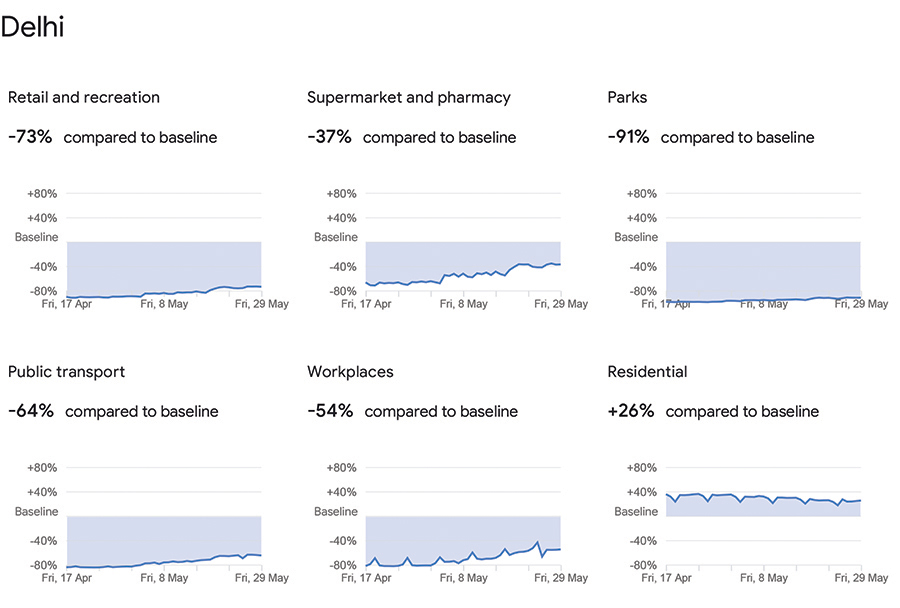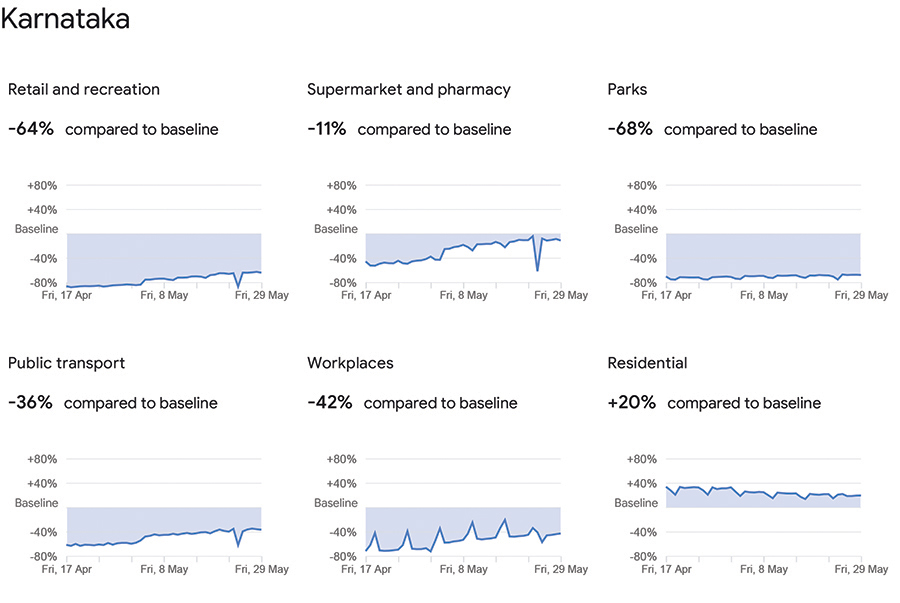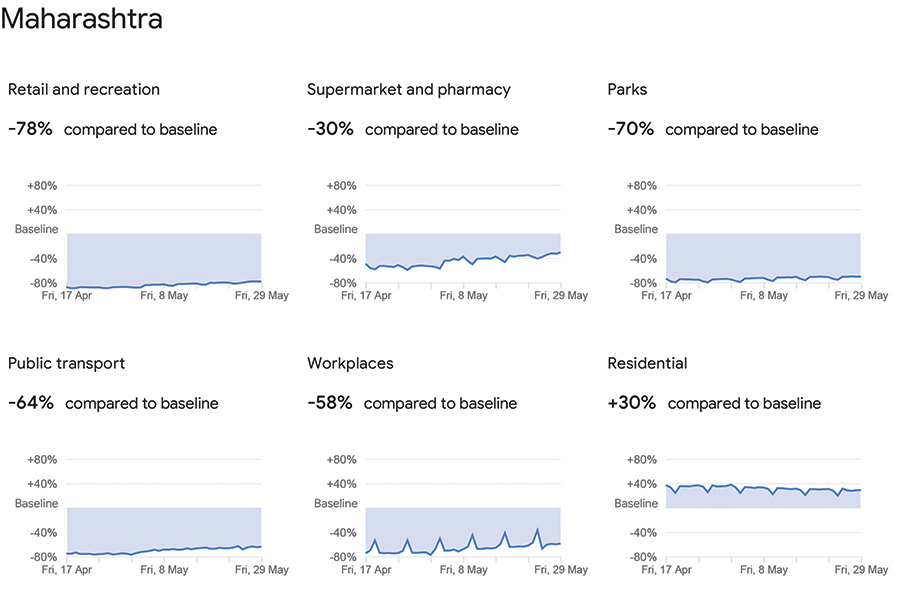How India travelled during lockdown?
By M4G Bureau - June 10, 2020
Google’s data on public movement shows the fluctuating footfall at different touchpoints amid the COVID19 of various states
Google releases the mobility data for April 2020-May 2020 showcasing the movement trends over time by geography, across different categories of places such as retail and recreation, groceries and pharmacies, parks, transit stations, workplaces, and residential. Each Community Mobility Report data set is presented by location, and highlights the percentage change in visits to places like supermarkets and parks within a geographic area. In Google Maps, they have used aggregated, anonymized data showing how busy certain types of places are—helping identify when a local business tends to be the most crowded.

The data demonstrate the trend from April mid when the lockdown was highly strict till May end when some relaxations were given. And compared to a baseline i.e. median value, for the corresponding day of the week, during the five-week period 3 Jan – 6 Feb 2020.

Talking about the top states i.e. Delhi, Karnataka, Maharashtra, all three of them experienced a big hit in the retail and recreational places where the footfall fell more than 70%, followed by the public transport where Delhi and Maharashtra has seen more than 60% fall and Karnataka had seen a bit better response with only 36% footfall reduction in comparison with the baseline. And the recovery by the end of May has been very marginal.

The workplaces which have largely opted for the work from home culture for longer duration, seem to be taking more time in coming back to normalcy as Delhi and Maharashtra, both hotspots of the virus spread saw more than 50% lesser footfall with the marginal improvement and Karnataka is merely 42% lesser than the baseline.
The Supermarket and pharmacy, remained the most crucial touchpoints during the lockdown to meet the everyday essential needs which witnessed the relatively better response than other touchpoints with Delhi 37%, Maharashtra 30% and Karnataka merely 11% reduced footfall. Also it almost bounced back to the baseline by the end of May. Lastly the residential footfall has gained some traction; close to 30% in all three states on an average.

